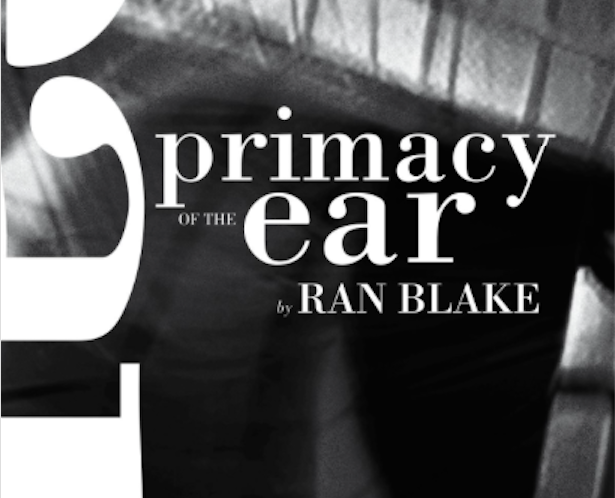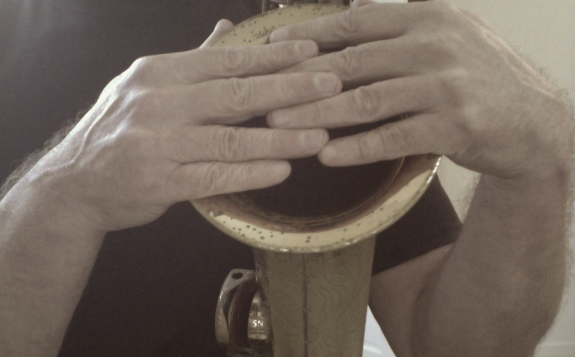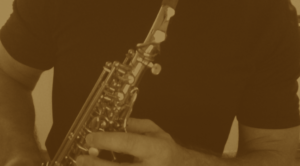
One of my all-time favorite musicians is pianist, composer, improviser and educator, Ran Blake, who has been teaching at Boston’s New England Conservatory of Music for over 40 years. He has also amassed a significant body of recorded work that is simply stunning.
The first time I heard his music, the most formidable impression it made upon me was how startlingly unique it was, in combination with it being so clearly conceived and masterfully executed. The first recordings I heard were of him improvising over “standard” songs. I’d never heard anything like it before in my life.
I remember thinking, “How does he ‘hear’ things this way?” Where does all this come from?” He made me imagine what Charles Ives might have sounded like if he were a jazz musician. Yet even that doesn’t begin to describe his very personal approach to improvising music.
Well, the short answer to my two questions above has to do with one very specific thing: Ran Blake plays the way he does largely because of how he listens to and hears music.
Recently I read a copy of his book (first published in 2010), entitled, Primacy of the Ear. What a wonderfully apt title! Primacy of the ear, the “ear” being the most significant organizing mechanism in creating music.
To musicians, the word “ear” means so much. Everything from how accurately we perceive pitch, to how we conceive of form and structure, to how we hear and interact with other musicians, to how we imagine music yet to be played. And much more.
Even as an Alexander Technique teacher who specializes in working with musicians, I continue to learn more and more each day about how explicitly the “ear” impacts coordination, skill and expression. It’s huge.
So I was intrigued by the idea of perusing the thoughts on this topic from such a master.
In this book, Mr. Blake shares his wisdom and knowledge in both a theoretical/philosophical way, as well as practical one (with very specific exercises and activities to work through).
I’d like to share what I consider to be a few of the most significant ideas put forth from this book that resonate most with what I’ve discovered in my own explorations (both as teacher and performer) with respect to hearing and listening to music:
On the primacy of the ear in creating a personal music style:
Your single most crucial ally in this personal exploration is the ear. When you listen, the ear reacts before the brain has time to process; it is an honest broker. When you play, the ear pulls you to a sound faster and more confidently than your brain; it is the part of you most in the clutches of the muse.
(Scientifically speaking, the ear doesn’t “react” before the brain, as your ability to “hear” is a function of the brain. But I think what he means here is that you can hear something even before you become cognizant of what it is you hear. Hence, the word “primacy”.)
And this is true in so many ways. Ultimately, all expressive music is “played by ear” (deeply internalized and imagined), whether improvised or notated. I think this is what saxophone legend Sonny Rollins experiences, in part, when he is “accessing his subconscious”.
On listening to live and recorded music:
Not all listening experiences are equal, of course, and Mr. Blake describes several categories of consciousness when listening to recorded music, from “background” listening (completely passive), to what he calls “quiet listening” (giving your full attention), as well as “listening while falling asleep”, etc.
He also talks about the importance of repeated listening and analytical dissection in listening, and gives specific advice and guidance about carrying out these activities in an effective way.
On listening to recorded music as an artistic discipline:
This is a major area of discussion in this book. Mr. Blake believes (and I do, as well!) that active, intentional listening should be a daily component of musical study for any serious musician. It should be approached with the same care, strategy, documentation and edification as any other part of daily musical practice.
As a performance coach and teacher of improvisation, I’m still amazed by the percentage of musicians who come to me for help who are not listening to music in this intentional, strategic manner.
For aspiring improvising musicians in particular, this is often the missing piece of their study routine that is creating the kind of frustration that leads them to seek my help in the first place.
Deep listening means listening to everything, not just the pitches being played by the soloist. It means studying the color of the soloist’s sound, inflections, dynamics, use of space, and more. Not to mention listening specifically to what each member of the ensemble is doing in response the “whole” of the music being created.
On avoiding “ear fatigue”:
Yes, discipline yourself to listen deeply and purposefully, but respect your ears. Mr. Blake mentions that he consciously limits his intake of kind of “background music”, and treats his ears with the same care any instrumentalist should have with respect to avoiding overuse and getting adequate rest.
He advocates for designating periods of absolute silence to help “restore” the ear. (This is another thing that too few of the people who come to me for help do, as well!)
On the importance of singing:
From a practical performance point of view, this is probably the essence of this book’s message. For anything you express to be truly yours, ultimately it must be heard (imagined) vividly and precisely.
Mr. Blake has recorded a large portion of his work with singers (most notably, the brilliantly personal Jeanne Lee!) He states that one of the things he likes best about working with singers is that you’re only ever hearing what they hear. (He loves the immediacy of that of that phenomenon!)
There are no filters, no buttons to rely upon, no “muscle memory”, etc. When somebody is singing, you are hearing their imagination in its purest form.
And that’s the ultimate goal for virtually all ear training. Being able to immediately play what you imagine.
Bear in mind that being able to recognize a sound accurately (interval, scale, chord voicing, rhythm, etc.) is not at all the same skill as being able to re-create it from aural memory. You must sing everything you practice if you wish for it to become accessible to your muse!
This book is filled with lots of exercises, explorations, and strategies to help you “discover” and cultivate your ear. As somebody with a fair amount of experience studying “brain science” (neuroscience), I didn’t always agree with the author’s description and/or understanding of certain phenomena (as mentioned earlier on in this post about the ear and the brain, for example), but I most sincerely cherish the wisdom, insight, inspiration and immensely practical advice from this marvelous work.
Here’s a gorgeous rendition of the hauntingly beautiful song, Laura (composed by David Raksin), as played by Ran Blake and sung by the magnificentJeanne Lee. Enjoy!







